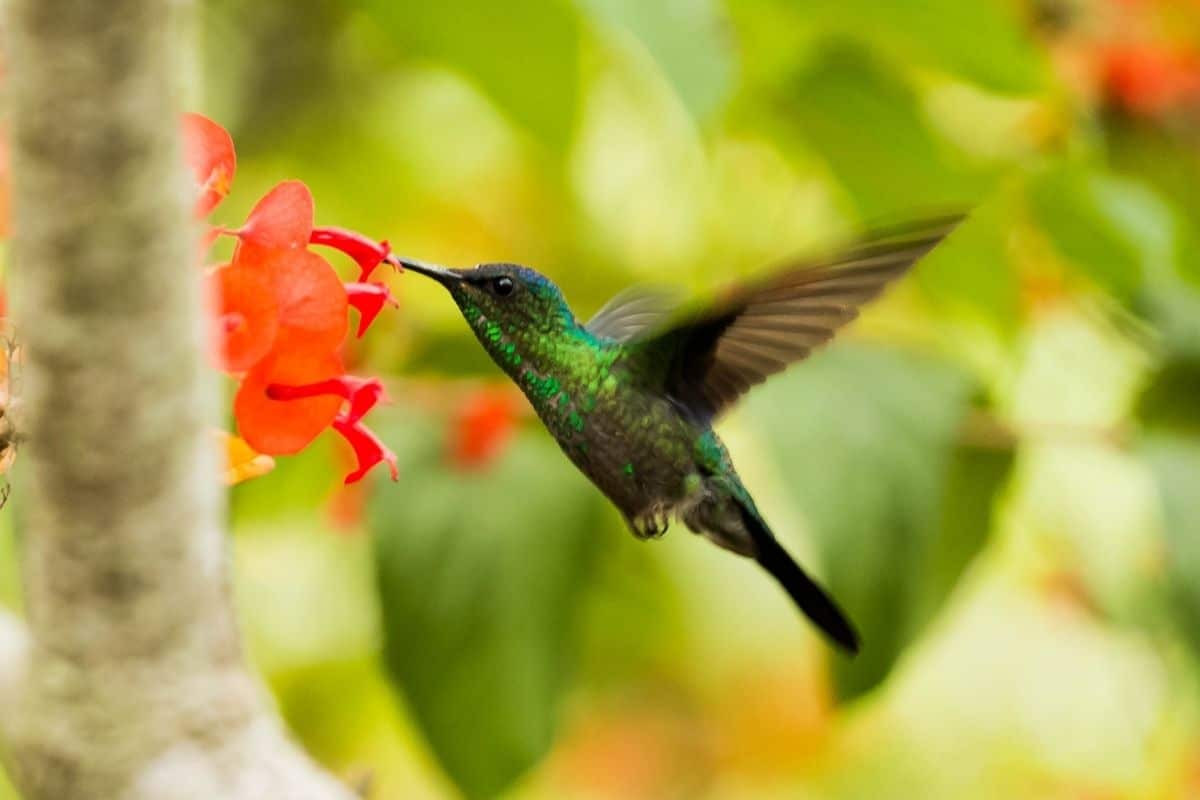
The smallest bird in the world turns out to be no match for the harsh, mountainous conditions. And that significantly limits the places the hummingbird can migrate to in the warming climate.
Climate change has meanwhile led to global and partly irreversible consequences for people and nature. For example, there is a massive relocation under our noses. And from animals. More and more animal species are migrating to new, colder areas. One is moving towards the poles, while the other is looking higher up. But what will the hummingbird do? Is a life in the mountains also reserved for this beautiful bird?
hummingbirds
To answer that question, scientists took hummingbirds on a trip to the mountains. The birds were caught in different locations. For example, the researchers enticed hummingbirds that lived just 10 meters above sea level, as well as conspecifics that occur at an altitude of 2400 meters, into the trap.
Metabolism
The hummingbirds were first brought to an aviary at an altitude of 1215 meters. After a few days, they were presented with a funnel with a tasty syrup, which the researchers could use to measure their metabolism. Later, the team also measured the metabolism during the hummingbirds’ ‘mini hibernation’; this is a remarkable sleeping state in which the birds are at night. They are then completely motionless and do not react to anything.
After these first experiments, the hummingbirds were moved to a next, nearby research station at an altitude of 3800 meters. Here the air is not only a lot thinner (there is about 39 percent less oxygen in the air), it is also considerably colder: the mercury does not rise above a barren 5 degrees Celsius. Four days after the move, the researchers measured the hummingbirds’ metabolism again.
effort
Although the birds had to work harder to stay warm in the thin air, their metabolism plummeted by as much as 37 percent. Moreover, all hummingbirds (thus both the birds that live at 10 meters above sea level, and the birds that occur up to 2400 meters altitude) had the same difficulty with the mountainous conditions. Not only did they have more trouble staying levitated, they also became sluggish at night for extended periods, spending more than 87.5 percent of the chilly night in their mini hibernation.
Conclusion
“Overall, these results suggest that low air pressure and reduced oxygen significantly affect the flight performance of hummingbirds,” concluded researcher Austin Spence. “In addition, it shows that hummingbirds apparently go into mini-hibernation longer when it is very cold.”
They are interesting findings† But what this means for the future of the hummingbird, as climate change forces these birds too to look for more comfortable conditions? “It looks like they’re having a hard time coping with the mountainous conditions,” Spence says. And that means we probably won’t see the hummingbird in the mountains. Instead, the researchers say it’s more likely that they’ll move further north in their quest for coolness.
Source material:
†Hummingbirds may struggle to go any further uphill– The Company of Biologists (via EurekAlert)
Image at the top of this article: Djalma Paiva Armelin via Pexels